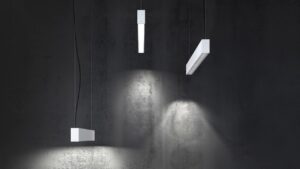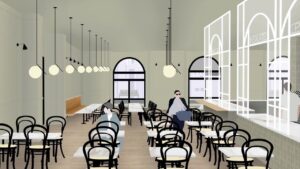There are several interior design jobs available in the market. These positions include designing homes and commercial spaces, ensuring that the space’s aesthetic appeal translates to consumer appeal. Moreover, these designers know how to make commercial interiors more appealing, boosting footfall and encouraging positive feedback. A commercial interior designer helps brands sell products and connect with clients to increase sales. They make use of various techniques, such as signage, display design and wayfinding, to achieve the desired effect.
Apart from the creative aspect of designing, interior designers also have to manage deadlines, source materials, and create mood boards. They also need to use computer applications during the design process. Moreover, they have to supervise the finished design, ensuring that it meets the client’s requirements. To get into an interior design job, an individual must have at least a bachelor’s degree in the relevant field. A student should be adept in computer applications, effective communication, and excellent technical knowledge.
To become a professional interior designer, one should complete an accredited four-year program. A lot of programs are accredited by the Council for Interior Design Certification, which ensures that the curriculum meets industry standards. Coursework in this field may include architectural drawing, lighting design, 3D design, and computer-aided design. To be certified, candidates should take the National Council for Interior Design Qualification (NCIDQ) exam, which requires relevant educational background and industry experience.
Residential interior designers plan the spaces inside their clients’ homes. They may also specialize in kitchen decorating and custom furniture design. They can also make bigger-scale recommendations to their clients, including removing or adding walls, installing skylights, new flooring, trim work, and exciting light installations. Residential interior designers are expected to meet with clients regularly, so they must be able to manage multiple tasks simultaneously. The average salary for a residential interior designer is $46,770 (US) per year. The exact salary depends on the experience, talent, and future plans.
The interior designer works closely with clients to create comfortable and appealing environments. They make sure to take into account architectural features and design elements. In addition to collaborating with clients, interior designers analyze blueprints and building codes, choose color schemes, and select furnishings. They also meet with clients and gather information about their needs and budget, and create sketches of their designs. After the initial consultation, designers source the materials they need for their creations. They also supervise the installation of design elements.
For the health-conscious, there are many interior design jobs for those who are concerned about the environment. Designers who work in healthcare settings often use evidence-based design principles to create spaces that are comfortable for patients. The environment in these spaces should promote good health and wellbeing, and it should be aesthetically pleasing to everyone. However, designers must comply with insurance and safety codes, which is why they are often called on to make designs that incorporate environmental standards.
Interior decorator
Hiring an interior decorator may be the solution to your decorating needs, but it also requires you to be involved in the process. You should be aware of your decorating needs and requirements so that you can better communicate your expectations to your decorator. Here are some tips to help you find a reliable decorator. Keep reading to learn more. If you’re interested in hiring an interior decorator, read on to discover some of the most common questions you should ask before hiring one.
Although formal training is not necessary to become an interior decorator, it is beneficial to have a solid knowledge of color and materials, and to understand how a room should be laid out. While a degree is not mandatory, you’ll be better off hiring a decorator who has the experience and creative eye to bring your vision to life. However, if you are unsure of whether or not an interior decorator has the qualifications to perform the work, look for a certificate in design software. Other decorators are certified.
There are several types of training programs for interior decorators. There are also online courses you can take that can prepare you for the profession. Some programs last for about six months to a year, and allow you to become a member of Certified Interior Decorators International (CIDI). Certification is an industry standard that recognizes experienced decorators. However, don’t forget that an interior decorator doesn’t create rooms or oversee construction plans. A good education will help you stand out from the competition and land new clients.
As long as you have a degree in interior decoration, you can call yourself an interior decorator. Many decorators have a diploma in interior design, but they do not have the necessary training to be an interior designer. In some states, you can only call yourself an interior decorator if you work on a commercial building or are a licensed interior designer. While it might be tempting to hire a decorator who has a diploma in interior design, it’s better to hire someone who specializes in interior design.
A professional decorator can provide you with a new look for your home or business. He or she can take measurements of the room and provide insight on the best layout to suit your needs. Often, an interior decorator is hired by an architect, developer, or homeowner. A good decorator has access to resources and trade connections to help create the perfect space. You can also ask about the decorator’s trade connections when hiring a decorator for your project.
The price of hiring an interior decorator is dependent on the service you need. Many interior decorators charge by the hour or a flat fee, or they may charge a percentage of the total cost. This fee may vary, but generally, interior decorators charge higher than the average decorator. Because they are required to undergo education and training to become a licensed interior decorator, their fees are higher than those of an interior decorator. While they are both important to your home and business, they are different professions.
Lighting designer
The job of a lighting designer entails more than just selecting lights and arranging them in the stage or on set. It also involves collaborating with other production team members to implement their ideas. The lighting designer must take precise measurements of the venue, determine its power capacity, and consider the placement of the fixtures and other elements such as the stage, truss, or catwalk. These factors will help him determine the correct lighting strategy for a scene.
A lighting designer interprets the artistic principles of light, using science to enhance visibility, soften harsh elements, and heighten desirable elements. The work of a lighting designer is collaborative and includes collaboration with other designers, directors, producers, and set designers. To be a successful lighting designer, one must possess the right technical skills, an open mind, and excellent organizational skills. A lighting designer must be a creative thinker, as well as team player and have excellent organizational skills.
Oftentimes, a lighting designer must work under other crew members, such as stage managers or production managers. An entry-level position may also involve working as a lighting technician under a lighting designer. While gaining experience in these positions is vital, it’s also important to network with other crew members to develop relationships that will lead to a permanent position in the industry. If you have a passion for rock concerts, for example, you can start by getting an entry-level gig on a tour or venue. For more traditional theatrical settings, look for technical apprenticeships.
The path to become a lighting designer is varied. Some people enter the field as a lighting crew assistant, then advance to a lighting designer position. Others move on to the role of assistant stage manager or lighting crew chief. While lighting designers are often referred to as lighting technicians, their job description requires a different set of skills. These skills are crucial for a successful career. If you have the right training, you can become a lighting designer!
A lighting designer works closely with the production team to create the most effective lighting scheme for a given stage or location. During technical rehearsals, they oversee the lighting crew and direct them to focus and gel light beams. The lighting designer is vital to the success of a production. They may even work on a stage where you’re a novice performer. These professionals are the key to successful productions! There are many benefits of working with a lighting designer.
A career in lighting design is exciting and rewarding. The creative process of creating beautiful spaces requires a designer with a keen eye for color, a technical mind, and problem-solving skills. Those with these traits will be in high demand in the coming years. This career is not for beginners though – many successful lighting designers are highly trained professionals with at least a bachelor’s degree in lighting design. If you have any technical background, it can be beneficial to take up a lighting assistant position before pursuing a graduate degree.
Colour consultant
Hiring a colour consultant may seem like an expensive luxury. But, in reality, it’s actually an affordable option compared to hiring a professional designer or renovator. First, consider what you want in a colour consultant. Many of them will help you find the perfect colour scheme that suits your personal taste and personality. Whether you’re selling your home or looking to improve its appeal, a colour consultant can offer expert advice on the best way to dress your home.
Color consultants draw on various psychological and scientific theories to make recommendations on the best colours to use. For example, certain tones of red and green can clash. In addition, the colour blue is generally the most popular – although some experts suggest that red and yellow are unsuitable for a dining room or kitchen. The psychological aspects of colour are also important. For example, blue causes a calming effect, while red can cause hunger in certain people.
If you want to create a strong presence in the colour consultation industry, your best marketing tool is your website. Create a colour consultation blog that offers informative articles that are updated at least monthly. Your website and newsletter should also be SEO-optimized. Other ways to generate business include social media. Make a page on Facebook for your business and use Twitter and Instagram to promote your business. Podcasts can also generate business. And, you can use other mediums to promote your services, such as video and audio presentations.
A color consultant’s salary is determined by their experience and skills. Whether they are self-employed or working for a commercial company, a colour consultant’s salary will vary, but you can expect to earn approximately $150 per hour. However, you should also consider the cost of hiring a colour consultant. If you’re a beginner, you can start out by working from home and earn around $12 to $15 per hour. Depending on how complicated your project is, you might need several meetings to find the perfect colour scheme for your space.
Working with a colour consultant will save you time. You may have spent hours browsing online decorating inspiration sites or paint fan decks. You can get lost in the sea of choice. But a colour consultant’s expertise can spare you the trouble, because they’ve already done the research to find the most suitable combinations. Working with a colour consultant will eliminate the need to make numerous decisions about color after a first meeting. This will reduce your workload and stress levels.
When hiring a colour consultant, keep in mind your personality and budget. Some colours don’t go well with certain styles or decor. A kitchen, for example, is a high traffic area. But it could also be a gourmet chef’s paradise. Likewise, a family room or study room should be relaxing, not busy. A dark colour will draw attention and make a room seem longer. Also, it will highlight the ceiling.







